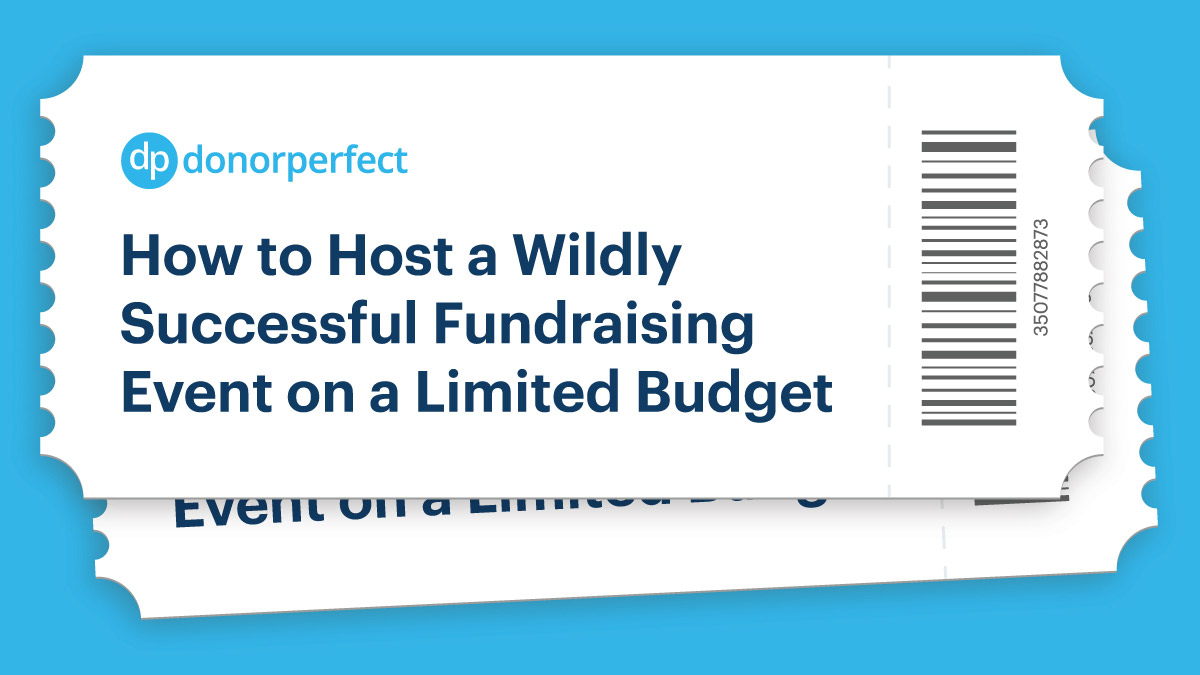
The success of your fundraising events doesn’t have to depend on the amount of money going into them. The real magic lies in sharing meaningful stories from recipients, making your guests feel seen and heard, and inspiring supporters to take an active role in your mission.
We interviewed Brandi Holys, Director of Development for the Children’s Scholarship Fund of Omaha, and the mastermind behind their amazing fundraising event success. In her first week on the job, she was tasked with sending out save-the-dates for their CHANCE luncheon amid slow COVID-19 vaccine adoption across the U.S.
Children’s Scholarship Fund CHANCE Luncheon, June 2021
- Attendees: 475
- Duration: 90 minutes
- Speakers: Event chair, Keynote, Alumni
- Awards: Four rising stars (K-8)
- Expenses: Under $28,000
- Revenue: $500,000+
Here’s how her team raised half a million dollars:
- Be flexible and intentional when creating donor experiences
- Put yourself in the attendee’s shoes while planning
- Build excitement before the event with email reminders
- Harness the power of video for personal touches
- Encourage supporters + recipients to share their stories
- Speed up momentum with an element of surprise
- Thank + engage your donors after the event
- Segment major donors to strike gold
Fundraising event idea #1
Be flexible and intentional when creating donor experiences
When challenges arise, you and your team can overcome them by thinking outside the box.
“We really looked at the restrictions and how we could be responsive to them,” says Brandi. “[As nonprofit professionals] we always have to be willing to level up and bring our best – bring our A-game. [With this event] I was committed to, ‘What do we need to do in order to do the best for our kids?’”
With U.S. citizens slowly getting vaccinated, the Children’s Scholarship Fund of Omaha (CSFO) assured attendees they would confirm the June 2021 date in mid-April, with a backup date in August. This showed guests they were committed to honoring the children nominated but were equally concerned with guests’ time and safety.
CSFO and other nonprofits who have done well over the past year stopped to think about how to do things differently – and digitally. As M+R reported in their 2021 benchmarks report, nonprofits that engaged in COVID-19 response saw noticeably higher growth in one-time giving revenue than those that did not. It pays to pay attention, and stay aware.
Fundraising event idea #2
Put yourself in the attendees’ shoes while planning
While planning your fundraising events, put yourself in the attendees’ shoes while also considering your organization’s top priorities. For example, if kids are your mission, plan an event that best accommodates the children and their families.
With a luncheon, CFSO gave the children a formal, honorary event, but didn’t have to worry about the complications of planning a whole evening. Keeping it to 90 minutes was a lot more cost-effective and less of a time commitment than a gala or dance. Win-win.
“If you are controlling costs, design your event at a time when you don’t have to deal with bar service – you will save money and time! There are significant expenses (and liabilities) associated with hosting an open bar, meanwhile, lunches can be professional and dignified without the elegance and expense expected of a gala, Brandi notes.
Brainstorm with your team:
- Does the event have any caveats or restrictions (i.e. COVID-19 vaccines)?
- What might make a guest feel more comfortable (i.e. accommodations)?
- What will they need to know before the event (i.e. safety protocol)?
To pull off a major event during a pandemic, CFSO focused on making their guests as comfortable as possible. They included a note with the invitation stating the event safety protocol, and that, if guests were uncomfortable with any aspect of it, organizers would accommodate however possible. The safety protocol was shared with board members before the event, as well, to keep everyone aligned.
Fundraising event idea #3
Build excitement before the event with email reminders
Before your event, be sure to get donors excited to give with emails about the event and what you hope to accomplish. Following Brandi’s example, you could use this touchpoint to spotlight children nominated for sponsorships, and where they hope this fundraising event will take them in the future.
CSFO sent each person who registered for the luncheon a pre-event email. They let them know they were looking forward to their attendance, and as an impetus to get involved in person, shared their safety protocol. When people contacted the organization with safety concerns, they could then point back to that memo, or send an additional copy.
Fundraising event idea #4
Harness the power of video for personal touches
Did you know that more than half (57%) of people who watch nonprofit videos go on to donate to that cause? Today’s nonprofits are relying on video – and other new-age digital strategies – to keep constituents engaged, as they expect a hyper-personalized experience from the organizations they give their hard-earned money to.
Whether your next event is in-person, hybrid, or online, you can make it personal with a video featuring your supporters, people you serve, or staff. Think of the messaging that will have the most impact on viewers, and invite someone to speak from their heart.
For example, CSFO sent a videographer to record clips of the children who were nominated for sponsorships, and a B-reel with the teachers who nominated them (wearing masks, of course) to provide a backstory.
Fundraising event idea #5
Encourage supporters + recipients to share their stories
There is no greater fundraising motivation than when supporters hear firsthand just how much their gifts mean to the people they serve.
At the luncheon, parents + guardians were given the floor to tell a story about how the sponsorship affected their household. One mother, who had been experiencing significant hardship – a cancer diagnosis and job loss during a pandemic – said of the sponsorship, “I didn’t have to worry about my daughter’s tuition. I couldn’t be more grateful.”
The keynote speaker could drive home the impact of each donor’s gift by sharing his own experiences facing similar struggles to the children there that day. Unscripted and personal, he talked about how families that aren’t white grow up to expect disappointment, and that that needs to change.
Fundraising event idea #6
Speed up momentum with an element of surprise
Take this incredible example from CSF, who raised more than $100,000 during their 90-minute luncheon. Who better to set a surprise goal than your keynote speaker, who has already captivated your audience?
At the end of his moving speech, the keynote speaker surprised the crowd with a challenge to raise $100,000. At this point in the luncheon, guests had already seen and heard firsthand the bright future of scholarship recipients from speakers, and would keep the $100,000 goal in mind while hearing from the amazing kids who were nominated.
“Normally, when you set a goal like that, you would use a major giving approach – make sure you’ve asked donors ahead of time so that you know you can achieve your goal. With that situation, I didn’t have the opportunity to do that groundwork… but we met it!”
For those who were not prepared to make a larger gift at the luncheon, CSFO accepted donations after the event through online donation forms and mail-in payments.
Fundraising event idea #7
Thank + engage your donors after the event
Tracking registrations and attendees through your online form data isn’t just good for your post-event cost analysis, it’s great for fostering further engagements with the generous donors who made your success possible.
In response to the event’s amazing success, CSFO’s keynote speaker wanted to send out 112 thank-you notes to those who gave the day of the luncheon, when his surprise $100,000 challenge went into effect. To set those people apart, Brandi set up a sub-solicitation group in her donor database to quickly generate a list of each donor and their address and quickly created a mail merge for the thank-you notes.
Thank-yous can come in all shapes and sizes – instead of a letter, some donors may prefer to receive thanks digitally. Look back to your research from the planning stage of your event, or your donor personas, to segment those you want to reach in a digital approach.
Fundraising event idea #8
Segment major donors to strike gold
The real gold, Brandi says, is when events meet major giving. She explained that the attendees who gave during the event had strong relationships with CFSO. “This only brought some of those large donors closer and then brought some new donors into the fold as well.”
Engage your major donors to drive up event donations by segmenting them from your other contacts, and treating them like the stakeholders they are. Send them a targeted email that sparks their interest in your event goals. After your event, you can thank them with a little extra love, as they typically give 7x more than your one-time donors.
When fundraising events are planned with flexibility, intention, and careful cost analysis, they tend to go off without a hitch. Engaging your unique donor groups before and after the event will keep them close, laying the groundwork for your next initiative.
Brandi and her team took the initiative to inspire a greater change, without going over budget. Let their story be your inspiration to stay flexible, think outside the box, and pivot when necessary to best accommodate your attendees.





